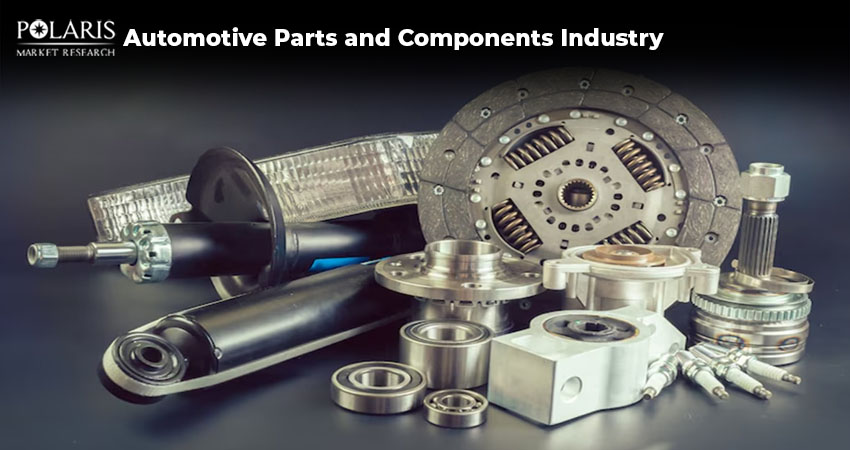Smart, Sustainable, and Connected: Exploring New Era of Auto Parts

The automotive industry is a complex ecosystem, a symphony of engineering and manufacturing that brings vehicles to life. At the heart of this system lies a vast network of parts and components, each playing a crucial role in performance, safety, and comfort. As the industry undergoes rapid transformations spurred by advancements in electric vehicles (EVs), autonomous driving, and sustainability initiatives, the market for parts and components is being redefined.
Let’s delve into the key categories and trends revolutionizing automotive parts and how they are driving the next generation of vehicles. Continue reading!
Key Trends Reshaping Automotive Parts and Components
Electrification and EV Components
The shift towards electric mobility is accelerating demand for specialized EV components such as batteries, electric drivetrains, and charging systems. Manufacturers are investing in research and development to enhance battery efficiency, reduce costs, and expand charging infrastructure. This shift is particularly pronounced in regions with stringent emission regulations and government incentives promoting EV adoption.
Battery technology is a focal point, with ongoing R&D focused on improving energy density, reducing charging time, and enhancing safety. Lithium-ion batteries continue to dominate. Still, new chemistries like solid-state batteries are gaining traction for their potential to reshape EV performance and sustainability.
EV-specific components also need different materials and design principles compared to traditional internal combustion engine (ICE) vehicles. This has led to a complete reengineering of multiple systems.
Recent Development
- A strategic partnership between CATL and NIO in early 2025 focused on building the world’s largest battery-swapping network reflects a broader push toward battery-as-a-service (BaaS) models, aiming to enhance convenience for EV users and reduce range anxiety.
Connected Vehicles and IoT Integration
The rise of connected vehicles is driving the need for components that facilitate seamless communication between vehicles, infrastructure, and the cloud. This includes telematics systems, infotainment units, and cybersecurity solutions. The integration of IoT enables real-time data exchange, enhancing user experience and enabling predictive maintenance. The growing demand for safety and convenience features, along with the allure of infotainment options, is also a major factor for the growth. IoT and connected vehicles are beneficial for fleet management, enabling efficient oversight of vehicles through a centralized dashboard.
Recent Development
- Collaborative agreements between major automotive tech players to develop tire-integrated sensors reflect the industry's growing focus on vehicle intelligence and driving personalization.
Advanced Driver Assistance Systems (ADAS) and Autonomous Driving Technologies
The integration of ADAS and autonomous driving technologies is reshaping vehicle design and functionality. Components like sensors, cameras, and radar systems are becoming standard to enhance safety and enable semi-autonomous features. Suppliers are focusing on developing reliable and cost-effective solutions to meet the growing demand for these technologies. The growing emphasis on road safety and reducing accidents is also a major driver for ADAS demand.
As the technology progresses, suppliers are focusing on miniaturization, reliability, and affordability of these components to cater to the growing demand in both premium and mass-market vehicles. The long-term vision of full autonomy relies heavily on the continued evolution of these parts, along with robust software integration and fail-safe system design.
Recent Development
- The launch of next-gen fuel cell systems by Toyota in early 2025, tailored for commercial vehicles, is an example of how ADAS and alternative propulsion technologies are converging.
Growth in Aftermarket Parts and Services
With an increasing number of vehicles on the road and longer vehicle lifespans, the aftermarket segment is experiencing growth. As vehicles age, the need for maintenance and scheduled servicing increases, fueling demand for aftermarket parts and services. Consumers are seeking high-quality replacement parts and services, prompting companies to expand their aftermarket offerings and focus on customer service excellence. The growing shift towards vehicle customization, including performance parts, aesthetic enhancements, and audio systems, contributes to aftermarket sales.
Recent Development
- The addition of nearly 130 new chassis components in early 2025 by ZF Aftermarket illustrates the continued focus on expanding vehicle compatibility and accessibility in the North American market.
What’s Driving the Transformation of Automotive Parts and Components?
Several factors are driving innovation across automotive parts and components. These include:
Environmental Regulations and Sustainability Goals
Governments globally are implementing stringent emissions regulations to combat climate change and lower pollution. This has prompted automakers and suppliers to rethink the materials and processes used in the manufacturing of automotive parts. Lightweight composites, recyclable materials, and low-emission components are being increasingly incorporated into vehicles.
Technological Convergence
Automotive engineering is being increasingly interconnected with innovations from other industries such as consumer electronics, aerospace, and information technology. Technologies like AI, machine learning, edge computing, and cloud connectivity are being integrated into modern vehicle systems. These technologies enable smart functionality across parts and systems.
Digitalization of Manufacturing
The implementation of Industry 4.0 principles, such as automation, robotics, digital twins, and smart supply chains, has transformed how automotive parts are designed and produced. This digital transformation helps ensure higher precision in parts manufacturing, enhanced quality control, and faster time-to-market.
Urbanization and Changing Mobility Patterns
Vehicle usage patterns have evolved as more individuals move to cities and new trends like ride-sharing, mobility-as-a-service (MaaS), and micromobility gain traction. This shift has prompted automotive parts makers to develop durable, multi-purpose parts that can withstand higher usage cycles and integrate easily with digital fleet management platforms.
To Conclude
The automotive parts and components industry is an essential part of the global automotive sector. As vehicles become more electric, autonomous, and connected, every subsystem, from sensors and batteries to infotainment and suspension, is being reimagined for the future. This continued evolution of automotive parts will be a driving force behind the vehicles of tomorrow.

